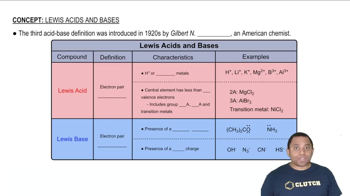Textbook Question
What mass of sodium benzoate should you add to 150.0 mL of a 0.15 M benzoic acid solution to obtain a buffer with a pH of 4.25? (Assume no volume change.)
1
views
 Verified step by step guidance
Verified step by step guidance


What mass of sodium benzoate should you add to 150.0 mL of a 0.15 M benzoic acid solution to obtain a buffer with a pH of 4.25? (Assume no volume change.)
A 100.0-mL buffer solution is 0.175 M in HClO and 0.150 M in NaClO. a. What is the initial pH of this solution?
A 100.0-mL buffer solution is 0.175 M in HClO and 0.150 M in NaClO. b. What is the pH after addition of 150.0 mg of HBr?
A 100.0-mL buffer solution is 0.175 M in HClO and 0.150 M in NaClO. c. What is the pH after addition of 85.0 mg of NaOH?